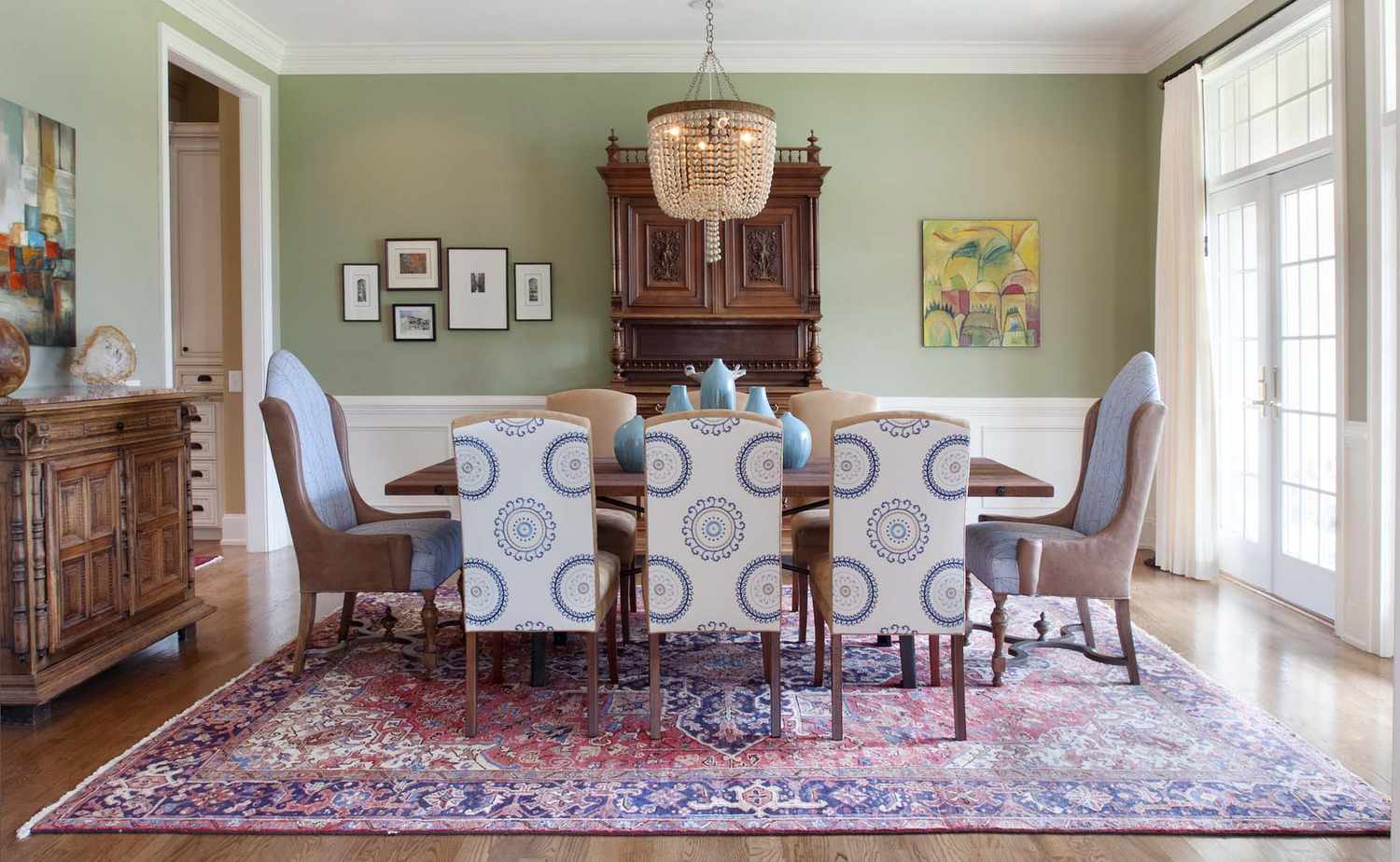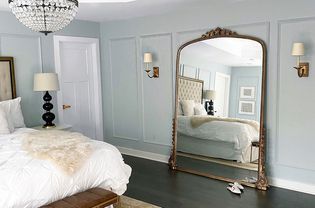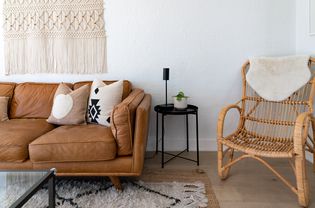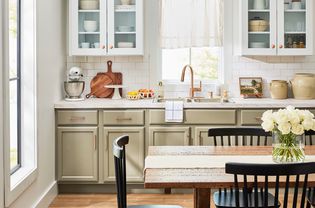Traditional interior design is just what it sounds like—a classic, warm, comforting, familiar home décor style that is rooted in the traditions of the past without being specific to any single time period.
What Is Traditional Interior Design Style?
Traditional interior design is a popular style of décor that is based largely on 18th- and 19th-century European styles and conventional notions of what a home looks like.
A traditional interior design scheme is timeless and placeless, comfortable and put together but not overly fancy. The kinds of furniture, textiles, color palettes, and décor used in traditionally designed rooms reference history and are familiar rather than trend-setting. For example, a traditional style bedroom might include a neutral color scheme; a carved wood or upholstered headboard; matching nightstands and table lamps; a chest of drawers; an upholstered armchair and ottoman; and possibly a landscape painting on the wall.
:max_bytes(150000):strip_icc()/GettyImages-155277876-9fbf5239d84c48e5b892d45107db8840.jpg)
TerryJ / Getty Images
Origins of Traditional Interior Design Style
Traditional interior design became widespread in the 20th century as postwar suburbs boomed and people sought to emulate interior design traditions of 18th- and 19th-century Europe, particularly England and France.
Traditional interior design hums along quietly in the background while more exciting, trendy, or decade-specific design eras come and go. While Mid-Century Modern designers were taking advantage of new production methods and the post-war housing boom to pump out innovative furniture and household objects using new materials, fans of traditional design were using those same production methods to create reproductions of classic Queen Anne chairs and Chippendale highboy dressers. Traditional design held its appeal for the mainstream while the postmodern 1980s saw influential but short-lived movements such as Memphis design that challenged every conventional notion of color and form but never challenged the mainstream.
Many Americans grow up in homes that could be characterized as traditional. And many people feel most at home in a traditional interior that is nonetheless updated and comfortable for modern living. The goal of designing a Traditional living room isn’t to create a wow factor but to provide a reassuring backdrop for family living that is at its best elegant, comfortable, and understated. At its worst, a traditional room can feel boring, old-fashioned, dated, and uninspired.
Traditional Design Today
Just because Traditional design is rooted in tradition doesn’t mean that it doesn’t and shouldn’t change and vary with the times. Grandmillennials have started a granny chic revival. Many of today’s traditional homes incorporate modern elements such as large kitchen islands and open-plan spaces. Current designers are likely to add more contemporary pieces, bolder colors, and antique and vintage furniture and décor to create a riff on classic style that many call new traditional. A hybrid of traditional and contemporary design, Transitional style has become an interior décor category unto itself.
:max_bytes(150000):strip_icc()/DesignbyEmilyHendersonDesign_PhotobySaraLigorria-Tramp_LAHouse_BasementOffice_1-5df79e6024e34a988f7033f3eade9339.jpeg)
Sara Ligorria-Tramp / Emily Henderson Design
Key Characteristics of Traditional Interior Design Style
- Furniture, décor, art rooted in European design primarily from the 18th and 19th century, particularly from England and France
- Design is based on styles of the past but often finished with fewer fine ornamental details
- Rooms are set up to be functional, family-friendly, and comfortable
- A focus on symmetry includes conventional space planning around classic uses of space; pairs of furniture and objects such as armchairs or lamps; and an overhaul harmonious feel rather than a room full of juxtaposition and contrast
- Interiors may include traditional architectural elements such as crown molding and wainscoting
- Color palettes include subtle neutrals with sparing use of bold color
- Wood finishes on floors and furnishings tend to be darker
- Walls are usually painted in muted neutrals but may include subtle patterned wallpaper in traditional motifs such as floral, stripes, or damask
- Textiles are generally neutral or subtly patterned as with wallpaper and may include heavy cotton, wool, velvet, fur, and silk
:max_bytes(150000):strip_icc()/dining-room-interior-design-nile-johnson-92e3d13357be4004af2938aa1f68b2da.jpg)
Traditional Interior Design Decorating Tips
- Pay attention to furniture layout, prioritizing symmetry, flow, and cohesiveness to make rooms family friendly and easy to use
- Choose a neutral color palette that favors subdued earth-toned colors or jewel tones
- Look for pieces that work together harmoniously in terms of style and color, but don’t go for matching sets of everything or you will end up with a canned furniture showroom look
- While you are more likely to find reproduction furniture in a traditional décor scheme, don’t be afraid to sprinkle in antiques, contemporary pieces, or vintage art that harmonizes with the overall design but adds dimension
- Incorporate pattern in soft furnishings and textiles in subtle tones, stripes, florals, and plaids
- Install simplified contemporary versions of classic lighting fixtures such as pendants, sconces, or chandeliers
- Persian-style reproduction or vintage rugs work well to add pattern and interest to a traditional room; opting for an overdyed Turkish rug here can add a bit of edge
- Choose warm, rich wood tones such as walnut for furniture and darker stains for flooring
- Window treatments tend to be classic and layered, with simple window blinds and curtains or even drapes, but modern interpretations of traditional style tend to forego the fussy curtain valances of times past
- Use traditional accessories such as tablecloths, candelabras, antique silver, sets of china, and vintage linens, but in a carefully edited and intentional way to avoid looking cluttered or dated
- Consider traditional style as a point of departure, rather than an end goal, feeling free to mix in non-traditional elements to create a more personal and memorable space

:max_bytes(150000):strip_icc()/_DSC3035-89e8764848db4aa6901d9451b9b15923.jpeg)



